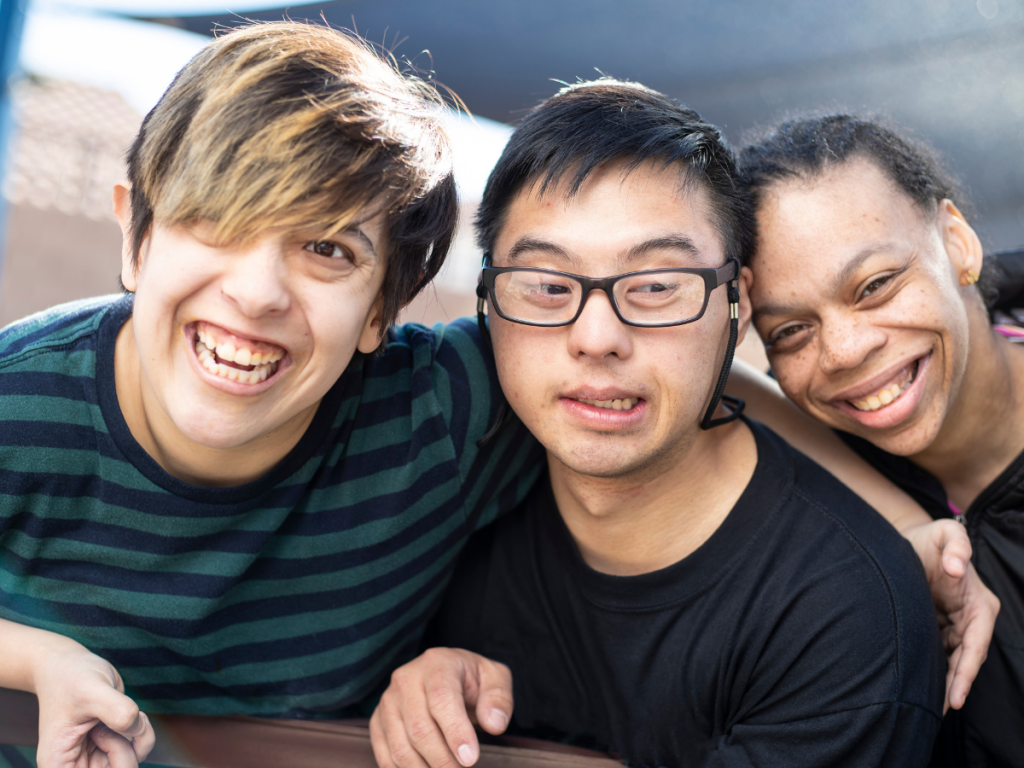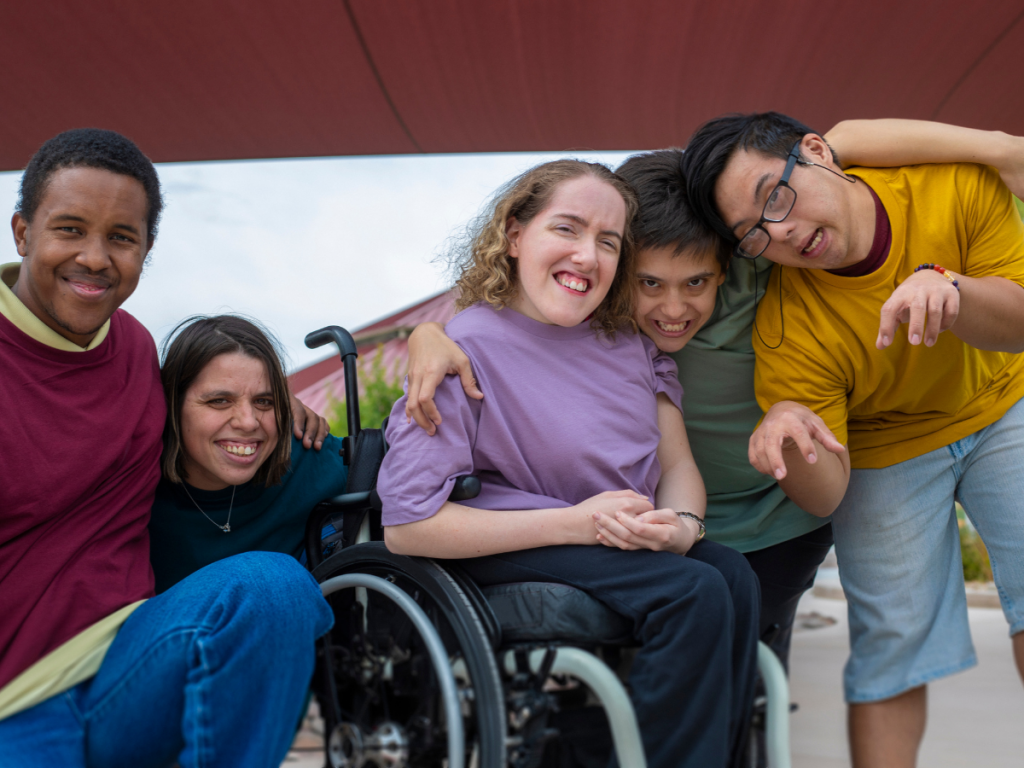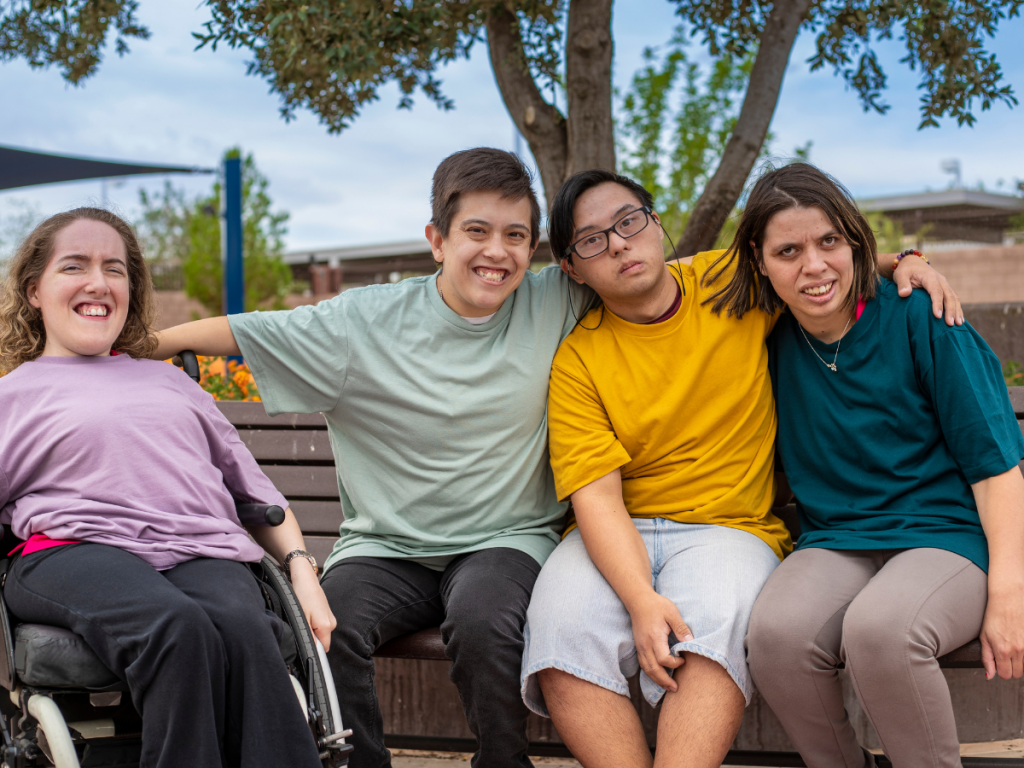Caregivers are often looking for sensory activities for adults with Autism. Here are some great sensory activities that you can try on your next caregiving shift and some tips about when to implement sensory activities with the person receiving care.
What Does Sensory Mean?
Sensory is a huge buzz word right now that you hear everywhere. Whether you’re in preschool communities with small children or you have a loved one on the Autism Spectrum, there are thousands or flashy articles and ideas all around the word “sensory”.
Sensory is a word used to describe how our body receives information from the outside world through the central nervous system. We are constantly receiving information through our senses and sensory experiences are based off of how our bodies respond to the information coming in from those senses.
It is common belief that we have five senses: sight, taste, touch, hearing, and smell. There are also three other senses that you might be familiar with if you’ve spent time with someone who has Autism. These three additional senses are vestibular (balance), proprioceptive (movement), and interoception (what you feel inside your body).
When we talk about sensory we’re talking about these eight senses and how our brain processes the information coming in from those senses. In an individual with Autism, they can become disregulated when they are getting too much or too little feedback from one or more of these senses. This can often cause them to go into fight or flight mode which can sometimes result in behaviors or meltdowns you may see as a caregiver.

What Are Sensory Activities for Adults with Autism?
As a caregiver, you may want to find sensory activities to help regulate the sense(s) that the individual is either seeking out or avoiding. If the individual doesn’t like sitting for too long because they always want to be moving, then find a way for them to get the movement that they’re seeking.
If they’re feeling uncomfortable because the lights are too bright or there are noises that are too loud and it’s causing the person to feel anxious and disregulated, look for ways to reduce the input coming in from those senses by turning off lights or trying some noise canceling headphones.
Not all sensory activities will work for all adults with Autism because it is a very individualized thing. The senses that are overstimulated in one individual might be something that another individual on the spectrum enjoys. When looking for sensory activities, try to find things that are tailored to the specific needs of the person you’re helping.
When Should You Implement Sensory Activities for Adults with Autism?
Sensory activities can be implemented anytime throughout the day. Some individuals with Autism may have tools they use all the time to help keep them feeling regulated and safe. Other individuals may have some strategies or things they like to use only in the moment when they start to feel disregulated. Like everything, it really depends on the individual and their needs. The person or their guardian (the person in charge) should be able to give you insights as to when, where, and how the individual typically likes to implement these strategies/activities to help them feel their best.

Sensory Activities for Adults with Autism:
If you’re looking for activities for adults with Autism, here are some ideas broken down by seven of the eight sense we discussed previously. (The eighth, Interoception is our ability to feel what’s happening inside our body such as needing to go to the bathroom, which can’t really be regulated by activities outside of the body.) The activities listed will specifically be for those who seek large amounts of input from those senses. After the listed activities for each sense, there will also be some tips on what to do if the individual is trying to calm down from or avoid that particular sense.
Sight:
- Activity mazes
- I-Spy Books
- Disco ball lights
- Watching a fish tank
- Scavenger hunts
- Trip to the planetarium
- Go to a movie theater
If the individual is too overstimulated from their current visual surroundings try turning off all screens and devices, turning off the lights, or try removing distracting decor from the walls.
Taste:
There aren’t too many activities for taste seekers, but you can always try having different fun taste tests. You could do a chip, cookies, or popsicle (etc…) taste test, and then turn it into a contest where you have to vote and rate each flavor you tried.
If someone is overwhelmed by tastes, and strong tasting foods cause them to feel disregulated, be sure to keep flavors mild during your caregiving shifts. Try finding a mild flavored toothpaste so teeth brushing isn’t an avoided activity. If they’ve tried a strong flavor that they’re trying to get out of their mouth, help them to make the taste go away quicker with some water, bread, or milk.

Touch:
The touch sense is often referred to as “tactile”. Some activities that can help those who seek after this sense would be:
- Back massagers or something a Theragun to help give deep pressure input
- Gardening
- Petting a dog or other animal
- Sequins stuffed animal they can rub such as this turtle.
- Sensory rubbing toys such as these.
For people who are overstimulated by the way things feel, try making sure that they have soft things that calm them down. Avoid poky tags in clothing. These individuals might calm well from weighted blankets and deep pressure if they’re feeling overwhelmed.
Hearing:
People who seek after auditory input might need to have constant noise playing in the background at all times. This could be music, or the TV in the next room. If they like making noise you could try:
- Playing with a musical instrument such as a guitar, drum, bells, or piano
- Fidget sensory tubes
- A crinkle cloth
- A rain stick
Individuals who are too overwhelmed by noise might do well to have most background noises turned off. If they’re sensitivity to noise makes it difficult for them to participate in everyday activities, you can try some noise canceling headphones to help them better participate in daily tasks. These individuals might also need their own quiet time in their room every so often to help them decompress and self regulate.
Smell:
- Have a candle burning in the background
- Head to the mall and smell everything in a soap store
- Play outside in the fresh cut grass
- Cook something in the kitchen with strong scents and flavor
- Play with scented play dough
Helping someone who is more sensitive to smells mostly entails helping to keep their environment as scent free as possible. If there are strong odors, try to dismiss them quickly, or help the individual to another room where the smell isn’t too strong. Clean with fragrance free cleaners, and try cooking with mild flavors.

Vestibular:
If someone is seeking after vestibular input, this means that they like movement, and lots of it! The vestibular sense controls our balance so activities that make you feel off balance are often craved by these individuals. Here are some ideas of things you can do for an adult with Autism who loves movement and challenging that vestibular sense:
- Sit on a yoga ball and bounce while working on other things
- Rock in a rocking chair or porch swing
- Spinning in an office chair
- Jumping on a trampoline
- Ride a bike or scooter
If someone you’re caring for has become overwhelmed by vestibular activities, a good way to help them is to make sure they have their feet on the floor to ground them, or make sure they’re sitting down on a couch or a bed. Try using deep pressure like a weighted blanket to give them some deep sensory input. They could also try walking around the room with something heavy like a gallon of water or some books to help them feel grounded again. Alisha Grogran MOT, OTR/L wrote a great post all about vestibular activities here.
Proprioceptive:
Proprioception is our ability to tell where our body is in space at all times. Can we feel our feet on the ground? Can we squeeze through a tight spot? It’s primarily responsible for our spacial awareness at all times. People that are proprioceptive seekers might seem like they have ADHD and they’re constantly going from one activity to the next, and are always on the move. Participating in proprioceptive activities can actually help to calm someone, and improve their focus over time. Some activities for adults could be:
- Running
- Rock Climbing (in a gym or outside)
- Using a scooter
- Jumpking jacks
- Push-ups
- Yoga
- Using weighted blankets
- Playing with resistance bands
Proprioception is the one sense that almost never causes overstimulation. It’s not impossible, but it is very rare. If you find that you’ve tried one of these activities and it did cause the individual to become disregulated, try some of the other calming techniques mentioned above until they feel ready to move on with the day.
Safeguards for Sensory Activities:
It is important to note that sensory activities should never be pushed on anyone. These are simply activities that the individual should want to participate in to meet their needs in a way that feels best to them. If the person says they have had enough, or cues that they would like a break, respect that and help them transition to a new activity.






